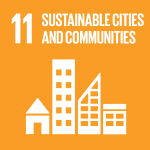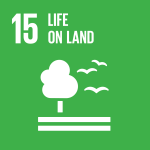October 2021 – Uganda is located on the Great African Plateau marked by the mountainous regions of its neighboring countries of Kenya, South Sudan, Democratic Republic of the Congo, Rwanda, and Tanzania. In the last two decades, Uganda has achieved considerable social and economic transformation, including a reduction in the poverty level to now 23 percent of the population. Uganda’s economic sectors – the majority of which are based on natural resources – are vulnerable to the changing climate. Already, the country is experiencing increased temperatures, frequent disease/pest infestations, disrupted rainfall patterns, frequent floods, and droughts, all of which have severe impacts on the agriculture and land use sectors. With 81 percent of the population engaged in rain-fed subsistence farming and agriculture contributing up to 40 percent of Uganda’s total GDP, climate change imposes great risks to the country’s economic growth, export earnings and rural livelihoods.
Uganda was one of the implementing countries for the FAO and UNDP supported Integrating Agriculture in National Adaptation Plans (NAP-Ag) programme from 2015-2020. A key output of this programme was the National Adaptation Plan for the Agriculture Sector (NAP-Ag), which details the sectoral short-, medium- and long-term adaptation strategies. Building on the lessons learned from the NAP-Ag programme and the momentum of the country’s updated nationally determined contribution (NDC), Uganda is participating in another five-year programme: Scaling up Climate Ambition on Land Use and Agriculture through nationally determined contributions (NDCs) and National Adaptation Plans (NAPs) (SCALA). The SCALA programme is funded by Germany’s International Climate Initiative (IKI) and is led by FAO and UNDP.
 The SCALA inception workshop for Uganda was held in September 2021, bringing together stakeholders from central and local governments, civil society, academia and research, development partners and the private sector. Through inclusive and participatory processes, stakeholders recommended the SCALA programme to promote transformative climate action in Uganda’s cattle corridor. The SCALA team sat down with Mr. John Chrysostom Birantana, Senior Principal Policy Analyst at the Ministry of Agriculture Animal Industry and Fisheries to understand the challenges related to scaling up both climate change adaptation and mitigation in the cattle corridor landscape, and how the country plans to overcome those barriers to achieve its ambitious climate agenda.
The SCALA inception workshop for Uganda was held in September 2021, bringing together stakeholders from central and local governments, civil society, academia and research, development partners and the private sector. Through inclusive and participatory processes, stakeholders recommended the SCALA programme to promote transformative climate action in Uganda’s cattle corridor. The SCALA team sat down with Mr. John Chrysostom Birantana, Senior Principal Policy Analyst at the Ministry of Agriculture Animal Industry and Fisheries to understand the challenges related to scaling up both climate change adaptation and mitigation in the cattle corridor landscape, and how the country plans to overcome those barriers to achieve its ambitious climate agenda.
***
SCALA: How will Uganda build on the achievements of the NAP-Ag Programme through activities planned under the SCALA Programme?
John Chrysostom Birantana: During the NAP-Ag programme, Uganda formulated a gender responsive National Adaptation Plan (NAP) for the agriculture sector and its monitoring and evaluation (M&E) framework. Under the SCALA programme, Uganda aims to further mainstream gender-responsiveness in the implementation of both the agriculture NAP and the updated NDC, through multi-stakeholder engagement in the cattle corridor. For example, gender-responsive systems-leadership training is one key SCALA activity aiming at skills development, transfer of transformative techniques and tools and strengthening of (sub-) national linkages for effective planning, implementation, and functional monitoring processes across the agriculture and land use sectors.
SCALA: What are some of the adaptation and mitigation challenges Uganda faces in its agriculture and land use sectors and value chains?
John Chrysostom Birantana: During a recent technical planning meeting for the SCALA programme, not only did we discuss challenges in the cattle corridor, but also challenges in the agriculture and land use sectors in general. Over 90 percent of Uganda’s agriculture is rain-fed, which makes it particularly vulnerable to climate change. Climate-induced harvest failure and erratic food price spikes, combined with other structural issues, including limited knowledge and skills for climate smart agriculture; lack of climate-resilient storage, transportation and processing infrastructure; limited agricultural insurance schemes; and inadequate access to finance, make it hard for smallholder farmers and particularly women, youth and poorer households to invest in climate adaptation and mitigation measures. Another challenge is related to the land tenure system, where women, youth and landless households as key food producers often have limited access and control of land and other production resources, experience cultural barriers and rarely participate in decision-making. Thus, they are inadequately empowered to invest in climate adaptation and mitigation measures that support sustainable agriculture and food system in the long term.
Other economic and environmental pressures are exacerbating the vulnerability of land use and agriculture sectors to climate change, namely fast population increase and urbanization, shifting consumer preferences and limited availability of arable land. At governance level, there is a policy gap related to food quality and safety and there is also limited integration and coordination mechanisms among relevant actors. Agriculture and food systems are multidisciplinary and need to be well integrated with effective coordination to guarantee dynamic adaptive management.
SCALA: You mentioned that Uganda wants to promote private sector investment in agriculture. Where do you see the private sector contributing?
John Chrysostom Birantana: Whilst private sector actors are participating at every value chain node of most agricultural commodities in Uganda, there are still some gaps that need to be filled. To give an example, there are only a few agriculture and livestock weather-based insurance schemes functioning in Uganda. Other entry-points include improving climate-resilience of food storage, transportation and processing infrastructures to mitigate food losses, especially the perishable commodities like horticulture, milk and fish, which are highly vulnerable to weather variability. For example, many milk producers and handlers in Uganda lack milk coolers and yet heat stress leads to milk spoilage.
SCALA: What are some priority areas for Uganda to achieve its adaptation and mitigation goals in the agriculture and land use sectors?
John Chrysostom Birantana: Uganda aims to support implementation of the short and medium-term adaptation and mitigation actions entailed in the agriculture NAP and updated NDC, starting with the expansion of extension services and climate-related information. SCALA programme should support the integration of climate resilience and adaptation information into the agricultural extension system especially at the local government levels. SCALA should also support the government to promote crop varieties and livestock breeds that are better adapted to the production practices and weather variability in the cattle corridor. To bridge the policy gap and address challenges associated with rain-fed agriculture, and expected variability in rainfall, SCALA can help Uganda develop an irrigation policy to ensure sustainable access to water and its efficient use for enhanced crop production and profitability for smallholder farmers. The programme should generally focus on strengthening of the sub-national-to-national linkages during planning, implementation and monitoring processes of adaptation and mitigation actions, with an emphasis on promoting private sector investment in climate-resilient agriculture in the cattle corridor.
***
Uganda has made significant progress in formulating climate plans and strategies and, with the support of programmes like SCALA, Uganda can move towards the implementation of its agriculture and land use transformative priorities in its NAP and updated NDC. The country developed its latest NDC through inclusive and participatory processes and aligned the NDC with its climate-resilient, long-term emission strategy. In both the previous and latest NDC, Uganda identified the agriculture and land use sectors as the country’s greatest source of emissions and, at the same time, the greatest opportunity for mitigation. Prolonged droughts, hotter days, pests and other climate risks expected in the cattle corridor, stretching from the southern part of the country to the North-eastern edges of Karamoja, put the agriculture and land use sectors at the center of the country’s adaptation strategy. Uganda recognizes that multi-stakeholder engagement is key to addressing the barriers to agricultural systems transformation in the cattle corridor. SCALA Uganda orients its theory of change around improved climate and risk information; stronger district-to-central government coordination; and scaled up private sector investment to promote landscape-level transitions towards inclusive, climate-resilient and low-emission agriculture in the cattle corridor.



